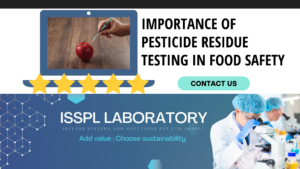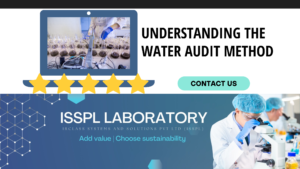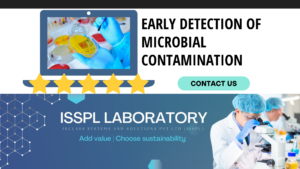An Overview by Team ISSPL - Analytical Testing Laboratory in India
ToggleDo you have an overall idea about stack monitoring and its essentials? One needs to have an overview of these critical aspects. In recent times, the government and authority bodies have made it an indispensable choice. One can encounter legal fines against their businesses in crores. It may be for not disposing of the accumulated plastic waste properly. In the past, there have been more than one case where government officials conducted random checks. They had imposed hefty fines on businesses with an improper system for controlling the pollution levels. If you own a company, business, factory, or organization, operate it in a nature-friendly way. It is essential to abide by government laws and regulations. One of the ideal ways to ensure an environmentally-safe system for plastic waste is through stack monitoring. More than fifty percent of air pollution is caused due to stack emissions from factories and industries. Thus, the stack monitoring system is a compulsory service for all businesses. Read on and understand more about the various aspects of stack monitoring and halogen testing.
About the testing process – Stack Emission testing is the industrially-approved process of reviewing the emitted gases and their degree of presence in the natural atmosphere. The reading is taken from industries to abide by environmental standards. Most of the manufacturing or operating unit of a business or company has a chimney. These chimneys are called stacks. The stack emits polluted and wasted gases into the air. It contains air particles and minute components, increasing the pollution to the next level. The results obtained from this testing process help the companies stay compliant with environmental norms.
Simply put, stack monitoring checks the emission rate and quality of industrial waste or pollutants in the atmosphere. It is a thorough monitoring process, essential to match the environmental standards. Most industries have a chimney for disposing of the waste they produce. When a company or business gets its stack waste monitored, they get an overview of the pollution index.
Businesses and stack testing – Find the link.
If your business utilizes a stack or chimney to discharge pollutants, it is indispensable to carry out routine stack monitoring testing. For instance, if the business uses stationary sources of discharging techniques like – power plants, diesel generators, boilers, manufacturing units, etc., stack monitoring testing is mandatory. Apart from these factory units, other companies must also monitor the HAPs or Hazardous air pollutants and VOC or Volatile organic compounds.
One can determine the frequency of stack monitoring depending on the type of industry. For multiple companies, the yearly stack monitoring program is sufficient. But other companies may need to carry out the testing program weekly, monthly, twice a month, or bi-annually. The frequency is relative and depends on the emission rate.
Vital factors in the process – There is more than one parameter for stack monitoring. It includes pollutants and the flow rate with the production pace of the factory during the sampling tenure. The parameters include size, structure, components, and more. The parameters for stack emission testing must cover the pollutants, flow rate, and production during the sampling period. Here is a list of parameters to resolve the needs.
- Diameter
- Height from ground level
- Temperature
- The velocity of flue gases
- The volume of flue gases
- The type of fuel
- TPM or Total particulate matter
- SO2
- NOx
- CO2
- Fluorides
- CO
- HCl
- Heavy metals like mercury
- Moisture
Why is it the need of the hour?
Stack emission testing and reviewing the pollutants released in the air necessitates monitoring. It is essential for these enlisted reasons –
- Adhering to the environmental standards
- Collecting and documenting critical data for Emission records
- Providing accurate data to Environmental Impact Assessment Surveys
- Reviewing process efficiency and process control
- For the process of CEMs or Calibration of continuous emission monitors
It is essential to ensure that the representative sample is apt for obtaining accurate results. One must follow the standard processes like – Isokinetic sampling, etc., during the stack emission monitoring procedures.
The prime benefits – Know them rightly.
Any company discharging harmful pollutants from a stack should carry out a stack emission testing process. It is applicable to stationary source emissions like the chimneys of power plants, manufacturing outlets, Diesel generators, scrubbers, boilers, etc. Some companies can also monitor levels of Hazardous air pollutants or HAPs and Volatile Organic compounds r VOC, by following a proactive approach. Stack monitoring frequency can vary with the industries. These companies must monitor weekly, monthly, bi-monthly, quarterly, half-yearly, or annually, based on the emission scale.
- The Stack emission testing report can facilitate and boost the companies to understand better and ease the decision-making
- The emission testing reviews the various types of pollutants and checks the permissible limits
- It offers a chance to reduce pollutants by changing the process
- Scope to eliminate the harmful pollutants by altering the disposal techniques or installing new pollution control equipment pieces at the factory
- Enhance the efficiency of the stack by adhering to the guidelines and implementing the best practices
About halides and halogen testing
The top testing facilities and services offer end-to-end evaluation support for halogens and halides. Halogen is the term used for a family of periodic chemical elements. It includes – fluorine, chlorine, bromine, iodine, and astatine. These are reactive, and by pairing them with a variety of metals, these halogens can create salts called halides. These compounds could be potassium iodide, silver bromide, and sodium chloride. The manufacturers at the factories utilize the halogens and halides in the products.
The key to meeting emission regulations with Halide and halogen testing
These chemicals may be corrosive in small quantities. But these are harmful in large quantities. The use of these halides is limited and defined by regulatory bodies and industry standardization entities. One can find global norms and rules for the consumer market, to maintain regulations on the concentration of halogens and halides in the product’s formulation. Manufacturers need to send samples of their design materials to the new-age third-party testing companies. The consumer product testing labs review them and determine whether the product formulations meet the requirements.
Closing note – Ensure the best consumer product testing with top-notch lab facilities
IRCLASS Systems and Solutions Pvt Ltd (ISSPL) laboratory is among the top analytical testing service providers with efficient resources. Get the best testing outcome with the best service team.
Image by storyset on Freepik







